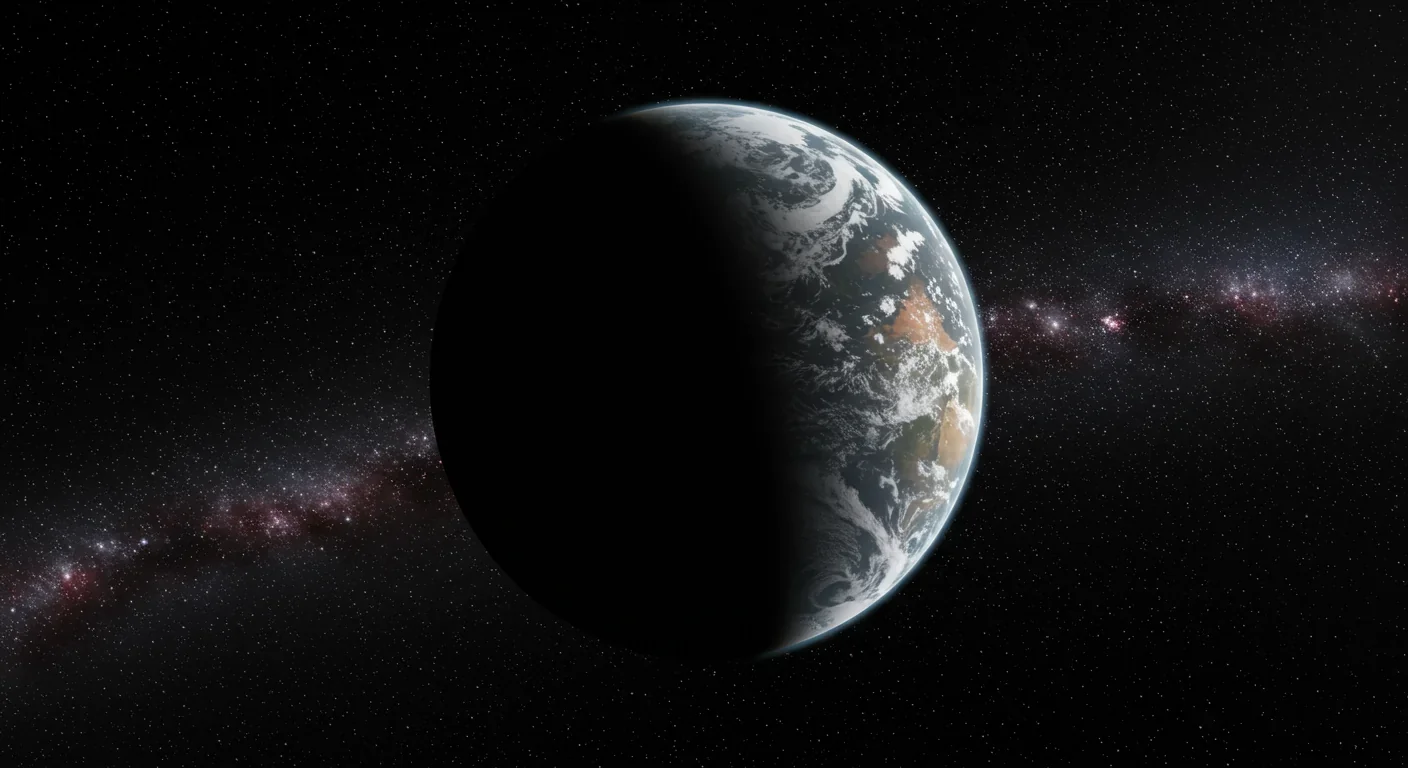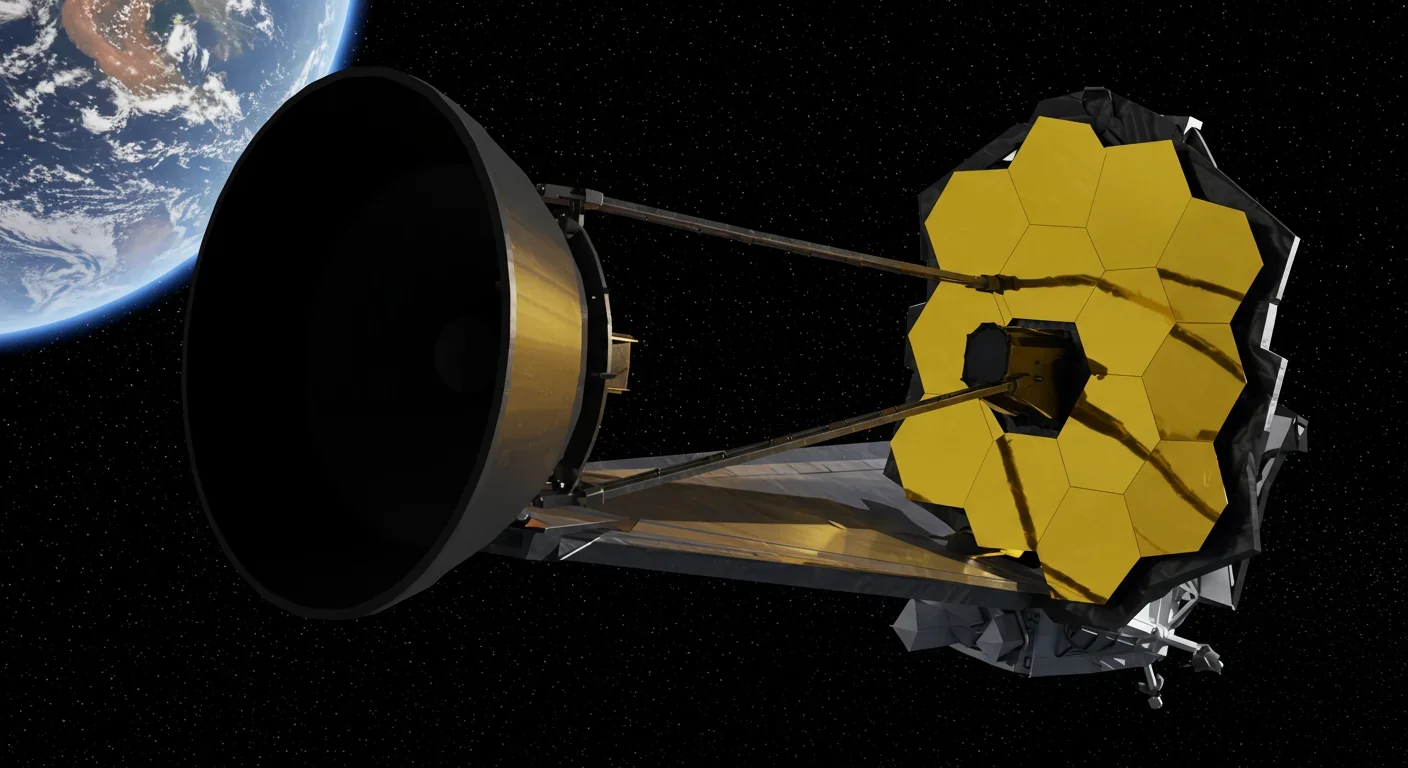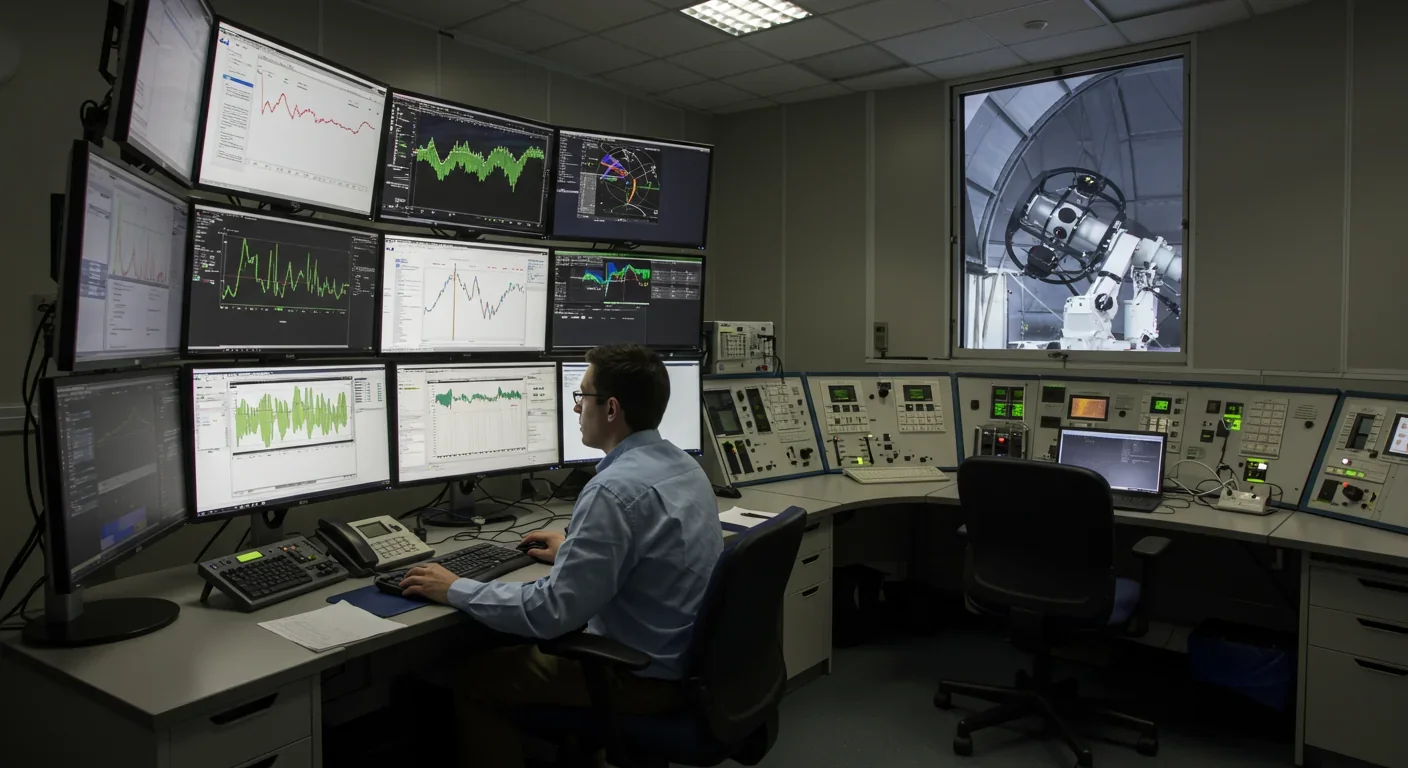Fusion Rockets Could Reach 10% Light Speed: The Breakthrough

TL;DR: Astronomers have discovered trillions of rogue planets drifting through our galaxy without stars, challenging our understanding of how planets form and where life might exist beyond traditional habitable zones.

Imagine a world hurtling through the darkness of space with no sun to warm it, no star to orbit, just endless void in every direction. It sounds like science fiction, but astronomers have discovered thousands of these lonely wanderers, and they're rewriting what we thought we knew about how planets form and where life might exist.
Rogue planets, also called free-floating planets or interstellar wanderers, are planetary-mass objects that drift through the galaxy without orbiting a star. They're cosmic nomads, ejected from their birth systems or formed in isolation, traveling through space on their own. And according to recent estimates from microlensing surveys, there could be around two trillion of these wanderers in our galaxy alone, possibly outnumbering stars themselves.
For years, scientists assumed planets needed stars. The very definition of a planet was tied to stellar orbits. Then in 2000, astronomers detected the first rogue planets in star-forming regions, and the rulebook went out the window.
These weren't just theoretical objects. They were real, massive, and challenging our understanding of planetary formation. The first discoveries were giants, more than five times Jupiter's mass, found through optical and infrared observations in regions where stars were being born. The kicker? They likely formed the same way stars do, through the collapse of molecular cloud cores, not through the gradual accretion around a star that we associate with normal planet formation.
Fast forward to 2025, and we're witnessing something unprecedented. A rogue planet designated Cha 1107-7626, located in the Chamaeleon I star-forming region, has been caught in the act of gobbling up gas and dust at a staggering rate of six billion tonnes per second. This isn't just growth; it's an explosion of mass accumulation eight times faster than observations from just months earlier.
Astronomers using the European Southern Observatory's Very Large Telescope in Chile, along with follow-up observations from the James Webb Space Telescope, documented what one researcher called "the strongest accretion episode ever recorded for a planetary-mass object." The planet is behaving like a young star, complete with magnetic activity driving the dramatic infall of material, something never before observed in a planetary object.
The story of how rogue planets come to be is one of violence, chaos, and cosmic accidents. Most rogue planets were likely born in normal planetary systems, circling a star just like Earth does. Then something went wrong.
Gravitational encounters with other planets, passing stars, or the system's central star itself can fling a planet into interstellar space. Picture a cosmic game of billiards where one badly aimed shot sends a ball flying off the table entirely. That's essentially what happens when a massive planet migrates inward through a system, using gravitational slingshots to boot smaller worlds into the void.
But that's not the only origin story. Some rogue planets, particularly the more massive ones, never orbited a star at all. They formed through the collapse and fragmentation of molecular cloud cores, the same process that creates stars. They're not so much planets as failed stars or super-planets, objects that blur the line between planetary and stellar formation.
This dual origin story matters because it tells us something profound about the universe: planet-sized objects can form through multiple pathways, and the conditions for creating worlds are more diverse than we ever imagined.
Detecting a rogue planet is like trying to spot a grain of sand in a dark room from a mile away. These objects emit almost no light, they don't transit in front of stars, and they have no gravitational relationship with a bright stellar companion to give them away.
So how do we find them? The answer lies in gravitational microlensing, a technique that takes advantage of Einstein's general relativity. When a massive object like a rogue planet passes in front of a distant star from our perspective, its gravity bends the star's light, creating a temporary brightening that lasts hours to days. By monitoring millions of stars and watching for these fleeting events, astronomers can detect planets that would otherwise be completely invisible.
Microlensing has revealed rogue planets as small as 0.3 to 2 Earth masses, proving that these wanderers come in all sizes. The data suggests Earth-sized rogues far outnumber the Jupiter-sized giants, which means the total population could be staggering.
Infrared surveys provide another detection method. Young rogue planets still glow with the heat of their formation, making them detectable in infrared wavelengths. This is how astronomers found Cha 1107-7626 and documented its unprecedented growth spurt. The James Webb Space Telescope's infrared capabilities are opening new windows, allowing us to study not just the existence of these worlds but their atmospheres, chemistry, and behavior.
JWST recently observed another rogue planet, SIMP-0136, and detected auroras heating its atmosphere, despite having no nearby star. The planet generates powerful magnetic fields that interact with charged particles, creating aurora-like phenomena similar to Earth's northern lights, but far more extreme. It's evidence that rogue planets can maintain dynamic, active atmospheres even in the isolation of interstellar space.

The numbers are mind-bending. Microlensing surveys suggest there are roughly two trillion rogue planets in the Milky Way. That's more rogue planets than stars, and possibly six times more rogue planets than planets bound to stars.
Think about that for a moment. For every planetary system like our solar system, there could be half a dozen orphaned worlds wandering the galaxy. Most of these are probably small, rocky worlds similar to Earth or Mars, ejected billions of years ago from long-forgotten stellar nurseries.
Recent exoplanet catalogs have confirmed over 6,000 exoplanets orbiting other stars, but that number pales compared to the estimated rogue planet population. We're only just beginning to scratch the surface of detecting these free-floating worlds because the techniques required are so challenging and time-intensive.
Studies published in journals like The Astrophysical Journal Letters are documenting not just the existence of rogue planets but their dynamic behaviors and growth patterns. The recent observations of Cha 1107-7626 revealed that the planet's accretion disk chemistry changed during the growth burst, with water vapor detected only during the episode. This suggests these worlds can host transient, high-temperature environments that might drive complex chemistry.
This is where things get really interesting. For decades, we've searched for life in the "habitable zone" around stars, that Goldilocks region where liquid water can exist on a planet's surface. But rogue planets challenge this paradigm entirely.
Without a star, you'd think these worlds would be frozen wastelands. And on the surface, they probably are. But beneath the ice, it's a different story. Tidal heating from moons, radioactive decay in the planet's core, or residual heat from formation could maintain subsurface oceans for billions of years.
Earth has thriving ecosystems in complete darkness at the bottom of the ocean, powered by volcanic vents and chemosynthesis rather than sunlight. If rogue planets can maintain liquid water through internal heating, there's no physical reason they couldn't support similar life.
The recent discovery that rogue planets can have strong magnetic fields and active atmospheres adds another dimension to this possibility. Magnetic fields protect against cosmic radiation, and active atmospheres suggest ongoing geological or chemical processes. These are ingredients that, on Earth at least, have proven conducive to life.
Some scientists speculate that if a rogue planet formed in a stellar system and was ejected after life had already emerged, that life might persist in subsurface oceans or deep underground ecosystems, completely cut off from the cosmos but continuing nonetheless. It's speculative, sure, but it's based on what we know about extremophile life on Earth and the physics of planetary interiors.
Every new rogue planet discovery forces us to reconsider fundamental assumptions about how planets form and evolve. The traditional model, where planets accrete from a protoplanetary disk around a young star, works well for systems like ours. But it doesn't explain everything.
The fact that some rogue planets form like stars suggests a continuum rather than a hard boundary between stellar and planetary formation processes. There are brown dwarfs, often called "failed stars," that blur this line further. They're too small to sustain hydrogen fusion but too large to be planets. Where do you draw the line?
One brown dwarf, whimsically named "The Accident" because of how unexpectedly astronomers found it, helped researchers solve mysteries about Jupiter and Saturn's atmospheres. Its unusual chemical composition provided clues about silicon chemistry in giant planets. These cosmic misfits, whether rogue planets or brown dwarfs, serve as laboratories for understanding planetary processes we can't observe in our own solar system.
The discovery that magnetic activity can drive accretion bursts in rogue planets, just as in young stars, shows these objects are far more dynamic than anyone expected. Planets aren't just passive rocks cooling slowly over billions of years. They can be active, evolving, and even growing long after their formation.

Here's a twist: the journey doesn't always end in lonely darkness. Recent research shows that stars can capture rogue planets as they drift through space. If a wandering planet passes close enough to a star at just the right velocity, gravitational interactions can trap it into orbit.
This means some of the exoplanets we've discovered in unusual orbits, far from their stars or on highly eccentric paths, might not have formed where they currently reside. They could be captured rogues, adopted into new stellar families after millions or billions of years wandering alone.
This process also works in reverse. Planets ejected from one system might eventually settle into another, potentially carrying organic molecules or even microbial life between star systems. It's a form of panspermia on a galactic scale, and it dramatically expands the possibilities for how life might spread through the universe.
The European Southern Observatory's Extremely Large Telescope, currently under construction in Chile, will revolutionize rogue planet studies. With unprecedented sensitivity and resolution, it will detect fainter, more distant free-floating worlds and characterize their atmospheres in detail.
NASA's Nancy Grace Roman Space Telescope, scheduled to launch in the coming years, is specifically designed for microlensing surveys. It will detect thousands more rogue planets, providing statistical samples large enough to understand their true population, mass distribution, and formation histories.
These next-generation instruments won't just find more rogues; they'll tell us what these worlds are made of, whether they have moons, if they retain atmospheres, and possibly whether any show signs of habitability. We're moving from discovery to characterization, from knowing they exist to understanding what they are.
Beyond the scientific questions, rogue planets represent something profound about the universe's wastefulness and abundance. For every stable planetary system, there may be many more worlds that didn't make the cut, ejected into darkness or formed in isolation.
Yet this "waste" isn't failure. These worlds carry information about planetary formation, stellar dynamics, and the chemical evolution of galaxies. They're natural experiments, showing us what happens when you remove the variable of stellar radiation and focus purely on a planet's internal processes.
They also expand the real estate for life in the universe. If even a fraction of rogue planets can maintain habitable subsurface environments, the number of potentially life-bearing worlds in our galaxy multiplies enormously. We're no longer limited to the narrow habitable zones around stars. The entire galaxy becomes a potential habitat.
For humanity, the existence of rogue planets is a reminder that the universe is stranger and more diverse than our solar system would suggest. We grew up on a planet circling a star, so we assumed that's how all planets work. But the cosmos doesn't care about our assumptions. It produces worlds in every configuration imaginable, and it's our job to find them, study them, and learn what they have to teach us.
As we detect more of these cosmic wanderers and watch them grow, evolve, and even host aurora-like phenomena in total darkness, we're forced to expand our definition of what a planet can be. And that expansion of understanding, that willingness to be surprised by the universe, is what drives science forward into uncharted territory.

Recent breakthroughs in fusion technology—including 351,000-gauss magnetic fields, AI-driven plasma diagnostics, and net energy gain at the National Ignition Facility—are transforming fusion propulsion from science fiction to engineering frontier. Scientists now have a realistic pathway to accelerate spacecraft to 10% of light speed, enabling a 43-year journey to Alpha Centauri. While challenges remain in miniaturization, neutron management, and sustained operation, the physics barriers have ...

Epigenetic clocks measure DNA methylation patterns to calculate biological age, which predicts disease risk up to 30 years before symptoms appear. Landmark studies show that accelerated epigenetic aging forecasts cardiovascular disease, diabetes, and neurodegeneration with remarkable accuracy. Lifestyle interventions—Mediterranean diet, structured exercise, quality sleep, stress management—can measurably reverse biological aging, reducing epigenetic age by 1-2 years within months. Commercial ...

Data centers consumed 415 terawatt-hours of electricity in 2024 and will nearly double that by 2030, driven by AI's insatiable energy appetite. Despite tech giants' renewable pledges, actual emissions are up to 662% higher than reported due to accounting loopholes. A digital pollution tax—similar to Europe's carbon border tariff—could finally force the industry to invest in efficiency technologies like liquid cooling, waste heat recovery, and time-matched renewable power, transforming volunta...

Humans are hardwired to see invisible agents—gods, ghosts, conspiracies—thanks to the Hyperactive Agency Detection Device (HADD), an evolutionary survival mechanism that favored false alarms over fatal misses. This cognitive bias, rooted in brain regions like the temporoparietal junction and medial prefrontal cortex, generates religious beliefs, animistic worldviews, and conspiracy theories across all cultures. Understanding HADD doesn't eliminate belief, but it helps us recognize when our pa...

The bombardier beetle has perfected a chemical defense system that human engineers are still trying to replicate: a two-chamber micro-combustion engine that mixes hydroquinone and hydrogen peroxide to create explosive 100°C sprays at up to 500 pulses per second, aimed with 270-degree precision. This tiny insect's biochemical marvel is inspiring revolutionary technologies in aerospace propulsion, pharmaceutical delivery, and fire suppression. By 2030, beetle-inspired systems could position sat...

The U.S. faces a catastrophic care worker shortage driven by poverty-level wages, overwhelming burnout, and systemic undervaluation. With 99% of nursing homes hiring and 9.7 million openings projected by 2034, the crisis threatens patient safety, family stability, and economic productivity. Evidence-based solutions—wage reforms, streamlined training, technology integration, and policy enforcement—exist and work, but require sustained political will and cultural recognition that caregiving is ...

Every major AI model was trained on copyrighted text scraped without permission, triggering billion-dollar lawsuits and forcing a reckoning between innovation and creator rights. The future depends on finding balance between transformative AI development and fair compensation for the people whose work fuels it.